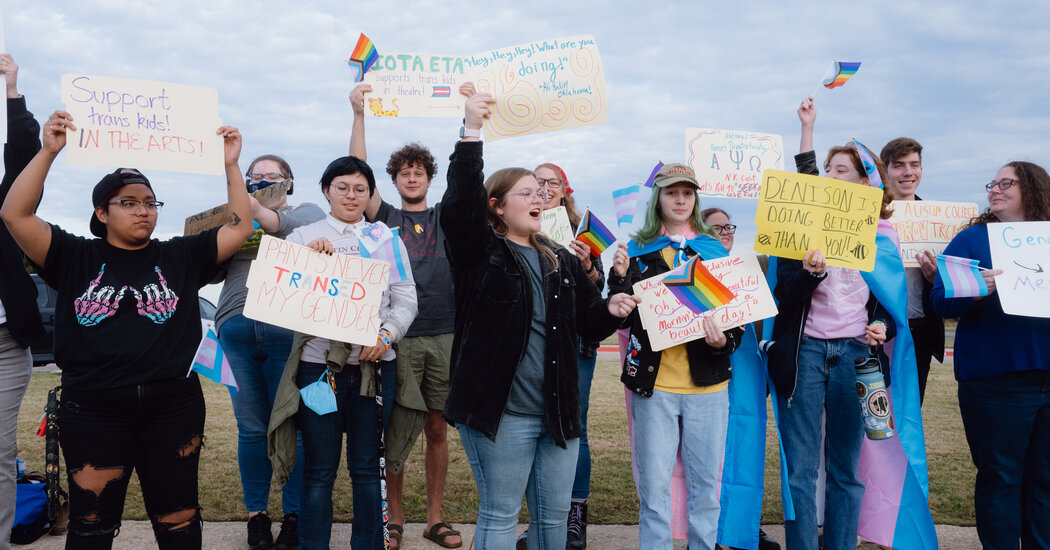A school district in the conservative town of Sherman, Texas, made national headlines last week when it put a stop to a high school production of the musical “Oklahoma!” after a transgender student was cast in a lead role.
The district’s administrators decided, and communicated to parents, that the school would cast only students “born as females in female roles and students born as males in male roles.” Not only did several transgender and nonbinary students lose their parts, but so, too, did cisgender girls cast in male roles. Publicly, the district said the problem was the profane and sexual content of the 1943 musical.
At one point, the theater teacher, who objected to the decision, was escorted out of the school by the principal. The set, a sturdy mock-up of a settler’s house that took students two months to build, was demolished.
But then something even more unusual happened in Sherman, a rural college town that has been rapidly drawn into the expanding orbit of Dallas to its south. The school district reversed course. In a late-night vote on Monday, the school board voted unanimously to restore the original casting.
After the vote, the school board announced a special meeting for Friday to open an investigation and to consider taking action against the district superintendent, Tyson Bennett, who oversaw the district’s handling of “Oklahoma!,” including “possible administrative leave.”


No theater in Japan had only male actors.
Japanese theater history is interesting! Kabuki (I assume you’re referring to this) started off as all women, then became all male. This created “onnagata,” actors playing female parts but in a constant state of method acting so they also appeared as women off stage. More recently there’s also the super-popular Takarazuka, an all-women musical troupe (basically Japan’s Broadway). I’m not sure how much those folks in Texas would consider Japanese theater part of their cultural heritage, but it’s another great example of queer theater in human history (that continues to this day!)
No, I meant noh. I just spelled it wrong.
https://en.m.wikipedia.org/wiki/Noh
Okay, that makes a lot more sense; I thought you were being sarcastic!
Nope. Just illiterate.